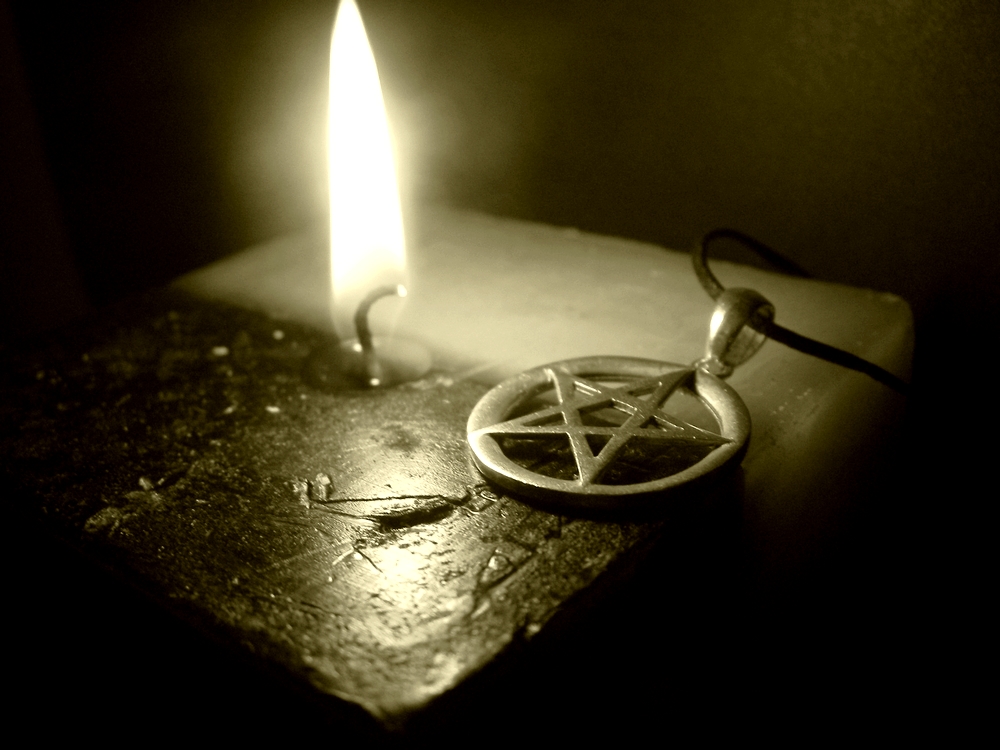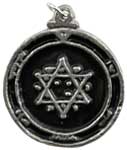Tools, Uncategorized
How to Make a Magickal Amulet
An amulet is an object believed to confer protection upon its possessor. It is also referred to as a good luck charm. The word “amulet” is derived from the Latin word “amuletum.” Anything can function as an amulet; gems, drawings, plant or animal parts, statues, or written words.
The ancient Egyptian gods were drawn on amulets. When a person died, they were buried with amulets with special spells written on them. The Egyptians believed that the charm in the amulet would guide the individual in the afterlife.
Amulets can be worn, hung on windows, affixed on valuable items, planted in gardens, or placed anywhere for protective purposes.
They are also worn as a symbol of dedication to a god/goddess. For example, wearing of the beetle amulet represents a symbol of dedication to the Sun god Ra. In Judaism, the same beetle serves as a symbol of infinity. Symbols like the “Ankh” represent strength and eternity.
The Uses of Amulets around the World
Amulets vary considerably according to their time and place of origin. Ancient Turkish soldiers were known for wearing amulets, which granted them victory on the battlefield.
In Arab, pregnant women wore protective amulets throughout the entire period of their pregnancy.
In Lapland, a brass ring is worn to keep ghosts away. A horseshoe can be hung above a doorway for protection.
In Assyria, god figurines are buried near the home for protection. In Egypt, Lapis lazuli eyes are placed in tombs to safeguard the souls while they journey to the Otherworld.
In Iroquois, miniature carved canoes are used to protect an individual from drowning.
In China, peach stones are used for protection against evil.
In Shoshone, spruce needles are used to keep sickness at bay.
In Bolivia, the god Ekeko serves as a standard amulet. The people offer him at least one banknote or a cigarette to obtain fortune and welfare.
Materials Used for Making Amulets
Everything about an amulet is significant. From the texture, material, color, shape, and inscriptions on it. During the Predynastic period, amulets were created in the form of animal’s statue. Over the years, they have been designed to be more sophisticated and easy to carry. Some are designed as jewelry, and others are based on seals and ancient scripts.
Some popular materials used to make amulets are emeralds, tiger’s eye, lapis lazuli, malachite, carnelians, feldspar, turquoise, peridots, etc. They can also be made with gold, bronze, iron, wood, coins, and clay.
How to Make an Amulet
Select the object/item:
Like I mentioned earlier, any object can be transformed into a magical amulet once we put our energy into it. If you are using a stone, you can choose the one that fits your astrological sign or the one that attracts the energy you want. Just know that anything that bears a special meaning to you can be used.
Decorate the object
Decorate the object with symbols, inscriptions, colors, or anything that matches your intention.
Charge it with the power of your intention
This step requires complete focus and concentration. Hold the object in your hand or against your body. Spend a few minutes meditating on your goal. Visualize its accomplishment. For instance, if you are creating an amulet for luck in gambling, imagine that you have won the game.
Get excited. Gaze into the amulet and watch as it becomes fully charged with your will. When you feel that the energy has been raised to the peak, say:
“As I have said, so mote it be.”
Seek assistance
You can summon the Elements or any of your favorite deity to charge the item. Create a circle on your altar, place a handful of salt or sand to represent the Earth. A candle to represent Fire, a cup of water to represent Water, and an incense stick to represent Air.
Concentrate on your goal. Breathe in and out and when you are in a relaxed state, summon the Elements.
Speak to the item to absorb the energy of the element. You can say
“May you absorb the energy of this element.”
After that, charge it with your personal energy. To do that, hold the item in your hand and raise your arms to the sky then say:
“I am energy. I am made of the same energy as the Universe, and the Gods are made of.
You and I are united by the same energy, by the same strength.
With this breath, I give you life (blow on the object)”
When you are done, dismiss any spirit that you had summoned during the work.
Anoint the Object:
This is an optional step that can be done during or after charging the object. You can find different anointing oil in stores depending on the purpose that the amulet is meant to serve.
Dip your finger into the oil and rub it on the object. State your intention during the process. You can also anoint your body with the oil to form a magickal bond between you and the object.
Some magicians would rather anoint their amulets with whiskey, wine, milk, or bodily fluids such as blood, sexual fluids, urine, etc.
Always recharge:
Your amulet has a spirit that abides in it. This entity must be fed and recharged regularly to keep it working. You can recharge it with the energy of the moon or sun. Amulets should be loaded at least once in every two months. This includes cleaning, incensing, and recharging it with your intention.
General Rules for Handling Amulets
The effectiveness of your amulet is dependent on the faith you have in it. Your belief produces the energy vibration that facilitates the realization of your intention. Amulets are often made to serve the owner exclusively, and there are specific rules attached to each amulet. First, you must always keep your amulets far from the reach of others. There are some amulets that should not be taken to the toilet or worn by menstruating women.
How to discard an amulet:
On completing its assignment, I would not recommend that the owner throws away the amulet. Throwing away amulets in the garbage can bring general misfortune to you. Bury it in the ground, preferably in a cemetery or close to a graveyard. Do you feel scared sometimes? If yes, get a protection amulet to feel more confident and secured.





